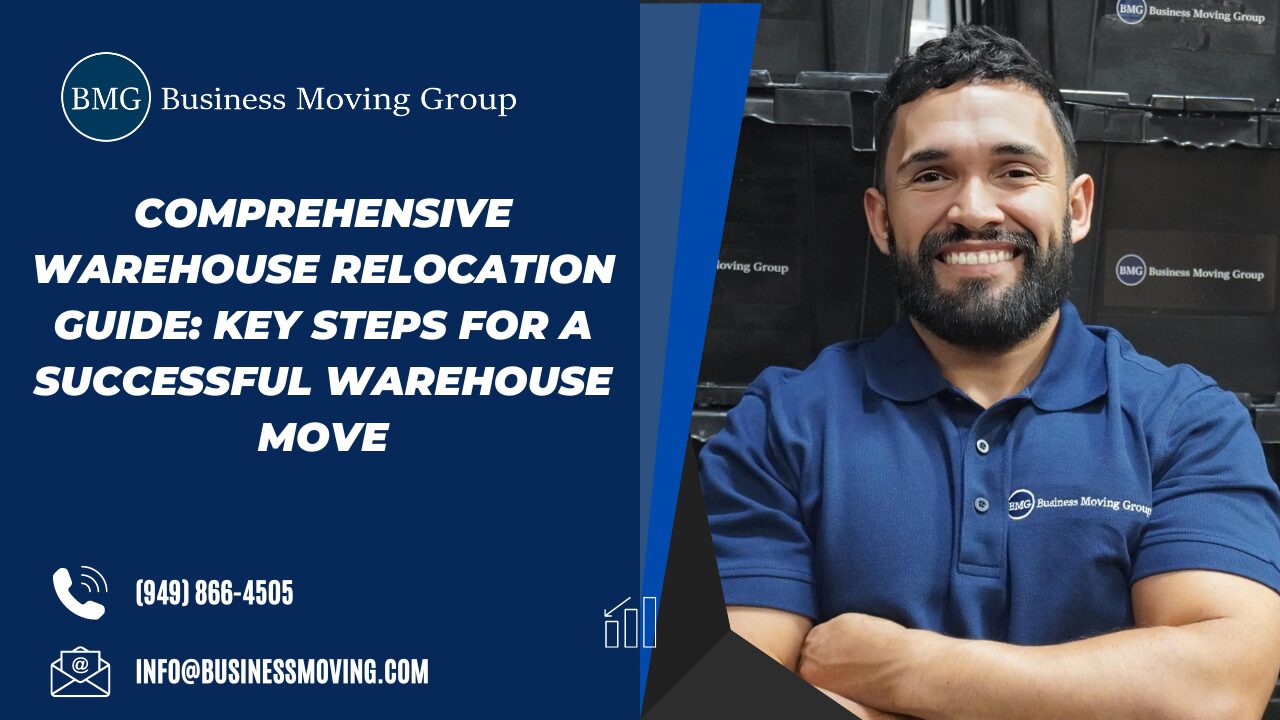This guide is brought to you by Business Moving Group, a nationwide leader in warehouse and industrial relocations with over 20 years of experience helping businesses transition their operations efficiently and cost-effectively.
Relocating a warehouse demands strategic planning and meticulous execution. Whether you’re expanding into a larger facility or streamlining operations, this guide offers a practical roadmap to navigate the complexities of warehouse relocation with minimal disruption.
Key Challenges to Address in Warehouse Relocation
To avoid delays and unnecessary costs, be proactive in the following areas:
-
Permitting and Compliance: Begin local permitting and compliance checks at least 60–90 days before your move to avoid construction or inspection delays.
-
Budgeting: Allocate funds for equipment relocation, new installations, permits, labor, and downtime contingencies.
-
Inventory Accuracy: Conduct a full physical inventory audit and remove obsolete or slow-moving stock before the move.
-
WMS and Tech Setup: Start implementation and testing of Warehouse Management Systems (WMS), printers, scanners, and networks at least 6 weeks before go-live.
-
Labor Planning: Assess internal capacity and plan temporary hires or overtime to sustain operations during the move.
Step-by-Step Warehouse Relocation Plan
1. Assign a Project Manager
Designate a single point of contact to oversee all phases of the move, coordinate vendors, manage budget adherence, and track milestones.
2. Optimize Space Planning
Design your new warehouse layout based on operational flow, racking systems, receiving zones, and pick/pack areas. Use CAD tools or consult with a layout specialist if needed.
3. Plan Staffing Resources
Estimate total labor hours for teardown, transport, and reassembly. Schedule in advance and factor in cross-training or third-party labor if needed to maintain operations.
4. Understand Local Building Codes
Work with your general contractor or facilities team to ensure compliance with fire codes, sprinkler clearances, racking permits, and safety regulations.
5. Conduct an Inventory Review
Audit all products by SKU. Remove expired, damaged, or obsolete stock to reduce relocation volume. Label all pallets with location codes for streamlined placement.
6. Update Logistics and Deliveries
Update ship-to addresses for all incoming purchase orders. Inform suppliers and transportation providers at least 3–4 weeks in advance.
7. Assess Racking and Equipment
Determine whether to move your current racking or purchase new systems. Account for disassembly, transport, permits, and reinstallation costs.
8. Coordinate Transportation
Secure your freight capacity early. Work with carriers or relocation partners to determine the number of trailers needed and optimal move schedules.
9. Install and Test Technology
Install your WMS, routers, servers, printers, and scanners before inventory arrives. Run systems tests and train staff before full operations begin.
10. Communicate with Employees
Provide regular updates to warehouse and operations teams. Share the move schedule, address changes, job reassignments, and layout plans.
Final Advice: Keep Stakeholders Aligned
Successful warehouse relocations rely on clear communication and strict timeline adherence. Host weekly update meetings and ensure that every department—from logistics to IT to HR—is aligned throughout the project.
Ready to Simplify Your Business Move?
Contact Business Moving Group today for a free consultation!
Visit us at Business Moving Group for helpful resources and to learn more about our services.

